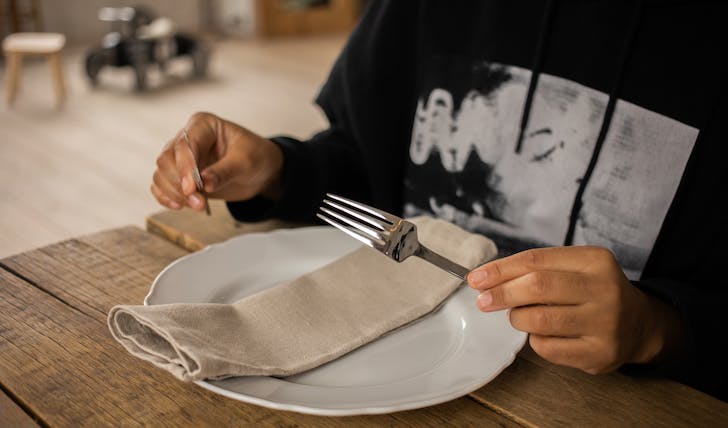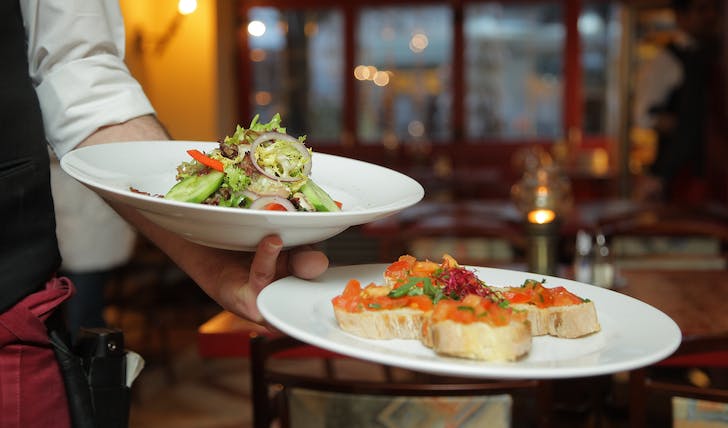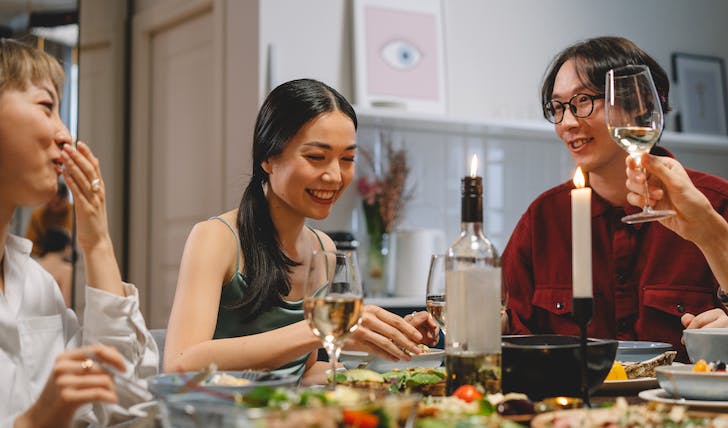6 Untold Table Manners Most People Get Wrong
In the world of dining and social interactions, table manners are more than just rules. They are class signifiers, subtle gestures of culture and respect. While many of us are familiar with the basics, like not talking with our mouths full or keeping our elbows off the table, what are some lesser-known table manners that often go unnoticed but play a significant role in fine dining etiquette?
Let’s dive into six untold table manners that are going to bring a touch of sophistication and savoir-faire to your dining table.

Monstera / Pexels / Here are some basic table manners most people get wrong.
Using Napkins Properly
Most people know to place a napkin on their lap, but the subtleties of napkin etiquette are often overlooked. For instance, did you know that gently dabbing the corners of your mouth is preferred over a full wipe? And when you need to leave the table, where do you put your napkin? The answer: On your chair.
It signals that you are coming back. Only at the end of the meal should the napkin be left loosely to the left of your plate.
Passing the Salt and Pepper: A Bonded Pair
Did you know that salt and pepper should always be passed together, even if someone asks only for one? They are considered a pair in dining etiquette. Also, never season your food before tasting it.
It is a subtle insult to the chef, implying the food needs improvement before you have even tried it.

Pixabay / Pexels / The rule of thumb is to start from the outside and work your way in with each course.
The Cutlery Conundrum
We have all seen a daunting array of forks, spoons, and knives in a formal setting and wondered where to begin.
But here is the twist: If there is a fish fork and knife, use them horizontally, not vertically, to gently separate the fish, thus showcasing both technique and grace.
Using Cutlery the Right Way
Your cutlery is not just for eating. It communicates. Resting your fork and knife on your plate at an angle signals that you are pausing, but not done. When you are finished, place them side by side at the 4:20 position on your plate.
This small gesture lets the server know that you are done without saying a word.
Toasting Etiquette: More Than Just Clinking Glasses
Toasts are a common part of many dining experiences. But there is more to it than clinking glasses. If a toast is being made, it is polite to stand (if the toast is formal,) make eye contact, and gently clink your glass with those nearby.

Coton Bro / Pexels / Clinking your glass for a toast is a polite table manners most people get wrong.
However, never clink too hard. It is seen as rude and can be a faux pas in finer settings.
Soup Savvy: The Silent Slurp
Slurping soup might be acceptable in some cultures. But in many Western dining settings, it is a no-no. The correct way to eat soup is to scoop it away from you and sip it silently from the side of the spoon. This prevents splashing and is a sign of dining finesse.
The Unspoken Language of Dining
Table manners are an unspoken language that can reveal a lot about a person’s upbringing, culture, and respect for those they dine with. By understanding and practicing these lesser-known aspects of table etiquette, you are not just following rules. You are engaging in a centuries-old tradition of respect and sophistication.
Remember, dining etiquette is not about snobbery. It is about making everyone at the table feel comfortable and respected.